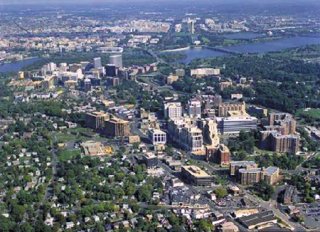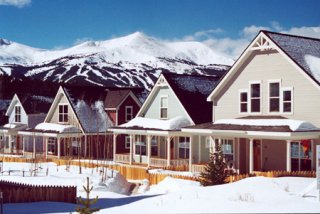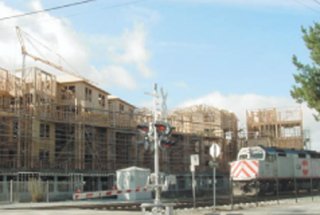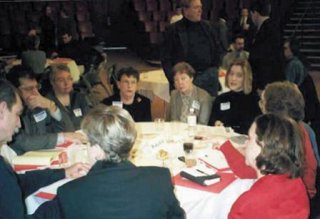2002 National Award for Smart Growth Achievement Booklet
From 2002 to 2015, EPA presented the National Award for Smart Growth Achievement to recognize and support communities that used innovative policies and strategies to strengthen their economies, provide housing and transportation choices, develop in ways that bring benefits to a wide range of residents, and protect the environment.
Awards were given in the following categories in 2002:
- Overall Excellence in Smart Growth: Rosslyn-Ballston Metro Corridor in Arlington County, Virginia
- Built Projects: Wellington Neighborhood, Town of Breckenridge Planning Department in Breckenridge, Colorado
- Policies and Regulations: Transit-Oriented Development Incentive Program, City/County Association of Governments of San Mateo County, California
- Community Outreach and Education: Community Preservation Initiative, Massachusetts Executive Office of Environmental Affairs in the State of Massachusetts
Overall Excellence in Smart Growth: Rosslyn-Ballston Metro Corridor in Arlington County, Virginia

This Smart Growth Award recognized Arlington County's planning approach, which placed dense, mixed-use, infill development at five Metro stations and tapered it down to residential neighborhoods.
This approach created vibrant "urban villages" where people live, shop, work, and play using transit, pedestrian walkways, bicycles, or cars. It also encouraged a wide range of housing types to develop and be preserved, including apartments, condos, townhouses and single-family detached homes.
For updates on this project, see the National Award for Smart Growth Achievement booklets for 2003, 2004, and 2005.
Built Projects: Wellington Neighborhood, Town of Breckenridge Planning Department in Breckenridge, Colorado

This Smart Growth Award recognized the Wellington Neighborhood in Breckenridge, which provided affordable and market-rate housing on a site that was once dredge-mined.
Supported by the local Planning Department, this project recycled land, created housing for working families and individuals, provided a free transit shuttle to the nearby downtown, and helped the region avoid "mountain sprawl." Wellington's houses cluster together in groups of ten and feature front porches and rear alleys. The clustering of homes allowed the neighborhood to preserve public open space and trails.
For updates on this project, see the National Award for Smart Growth Achievement booklets for 2003, 2004, 2008, and 2012.
Policies and Regulations: The Transit-Oriented Development Incentive Program, City/County Association of Governments of San Mateo County, California

This Smart Growth Award recognized the San Mateo's TOD Incentive Program. This program used transportation funds to help communities that built more housing near rail stations. It spurred the construction of much-needed housing and created environmental benefits by giving people the option of commuting and running errands by rail.
One such project, featured in the image to the right, was Phase I of the Franklin Streets project, which provided 206 residential units at the Redwood City Caltrain Station.
For updates on this project, see the National Award for Smart Growth Achievement booklets for 2003, 2004, and 2009.
Community Outreach and Education: Community Preservation Initiative, Massachusetts Executive Office of Environmental Affairs in the State of Massachusetts

This Smart Growth Award recognized the Massachusetts Community Preservation Initiative. This Initiative was a statewide smart growth program that helped municipal officials and community leaders understand the potential effects of future growth. It provided tools, technical assistance, and outreach to encourage informed and balanced growth decisions.
The initiative also facilitated community summits, which allowed residents and stakeholders to exchange ideas about the community and develop a common vision for its future.
For updates on this project, see the National Award for Smart Growth Achievement booklets for 2003, 2004, and 2005.

